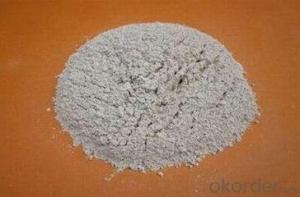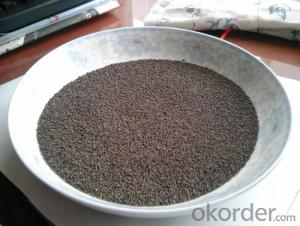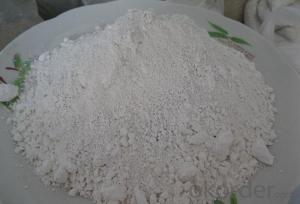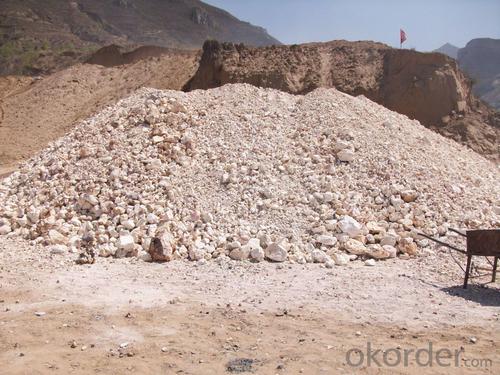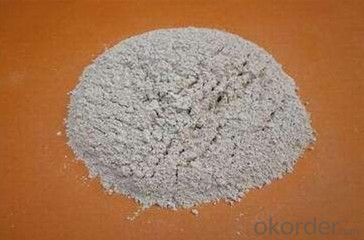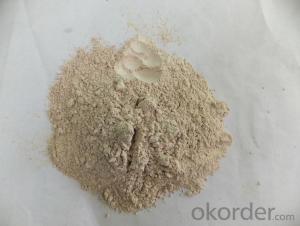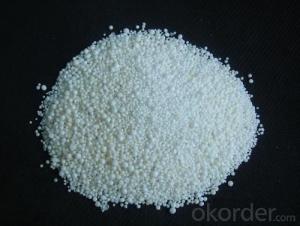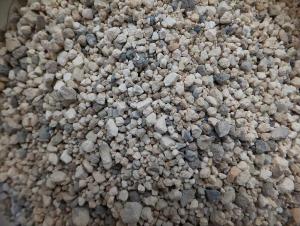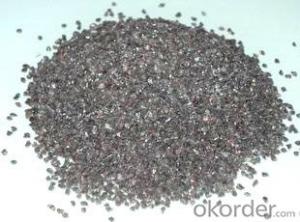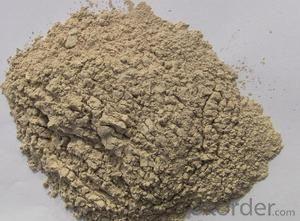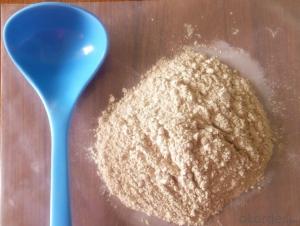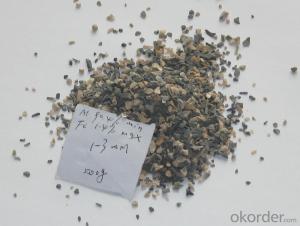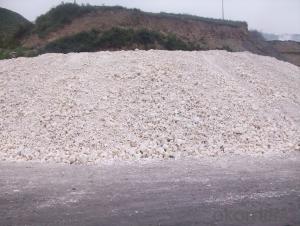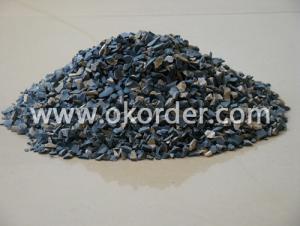Raw Materials for Refractory:85% Rotary/Shaft/Round Kiln Alumina Calcined Bauxite
- Loading Port:
- Tianjin
- Payment Terms:
- TT or LC
- Min Order Qty:
- 25 m.t.
- Supply Capability:
- 3000 m.t./month
OKorder Service Pledge
OKorder Financial Service
You Might Also Like
85% Rotary/ Shaft/ Round Kiln Alumina Calcined Bauxite Raw Material for Refractory
Specifications
1. We directly supply calcined bauxite
2. Al2O3:70%/75%/80%/85%/86%/88%/90%
3. Size:0-1-3-5-8-10/200mesh/325mesh/400mesh/500mesh
Size:
Lumps /Grains:0-1mm,1-3mm,3-5mm,5-8mm /Powders:100mesh, 200mesh,325mesh
| Description of bauxite ore |
There are several different models of raw bauxite,we own have three bauxite quarry,and can produce 5000 tons bauxite per month.
| Classification of bauxite ore |
| 1.Refractory Grade: |
Refractory grade bauxite has high refractoriness, good mechanical strength and moderate slag resistance. Bauxite in the refractory industry is typically used in ladle working lining, tundish furniture, delta sections, general perpose repairment, aluminium melting furnace and mineral processing.
| 3. Rotary calcined bauxite: |
Rotary Kiln Bauxite, as the name suggests, it is the bauxite produced by rotary kiln. there are three kinds of kilns for bauxite production mainly, rotary kiln, shaft kiln and round kiln.
| 4. Shaft kiln calcined bauxite: |
Shaft kiln bauxite, the bauxite calcined by shaft kiln. the raw material-bauxite ore is loaded from the top of kiln together with coal powder and combustion improver,the fire of calcination comes from kiln bottom, about 1300-1400 ℃After the complete calcination, the bauxite is carried out from the bottom.
Application:
1.Aluminium metallurgy.
2.Precision casting/Investment casting: bauxite grog fines can be made into mold for precision casting.
3.Refractory: high alumina bauxite's refractoriness can reach 1780°C.
It is charactered by good chemical stability and mechanical performance.(Al2O3 ≥48% with low Fe2O3)
4.Aluminium silicate refractory fiber: The high alumina bauxite grog can melt under2000°C-2200°C in the electric arc furnace. After a series of processing, it can become aluminium silicate refractory fiber, which can be made into fiber blanket,plate,cloth.
5.Mixing magnesia and bauxite grog with binders to pour the molten steel ladle for better overall lining performance.
6.Producing bauxite cement.
7.Abrasives.
8.Ceramics industry.
9.Chemistry industry for all kinds of aluminium compound.
Packaging & Delivery
Packaging Details: In bulk or in 1-1.25mr bag
Product Pictures:
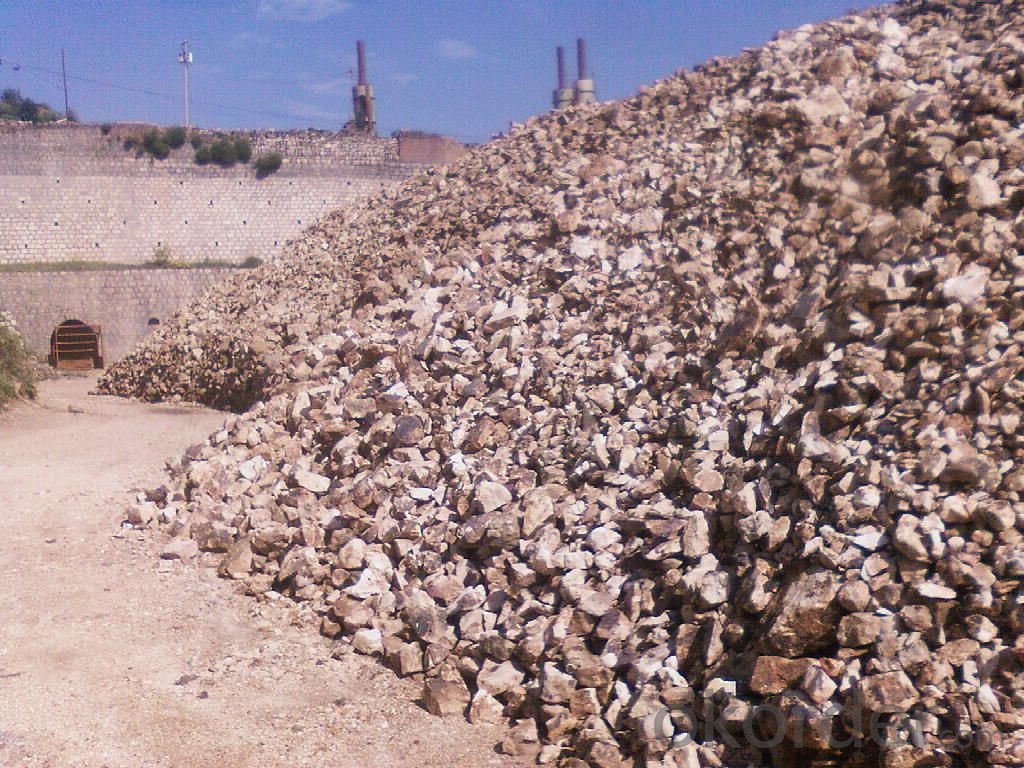
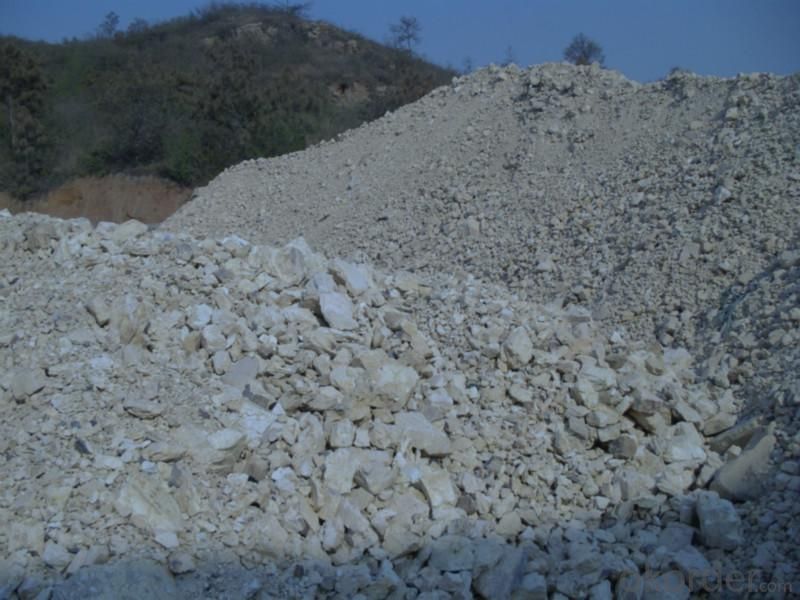
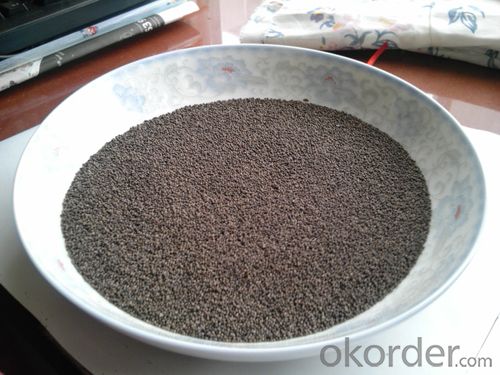

Our Service:
1. Your inquiry related to our products or prices will be replied in 24hours.
2. Manufacturer with large capacity, ensure the fast production cycle after confirmed the order.
3. Our professional technicians will answer your entire enquiry in patient.
4. To meet the refractory solutions, we can serve as your instructions.
5. Protection of sales area and private information for our entire customer.
If you’ve kind enquiries, please don’t hesitate to let us know. ^_^
- Q: What's the maximum temperature that the high-temperature resistant refractory ceramic fiber cotton can endure?
- Nichrome wire, stainless steel wire and glass fiber are reinforced. Ceramic fiber coating cloth and slag cloth, sintering ceramic fiber cloth and ceramic fiber fumigation cloth) Characteristics of the ceramic fiber cloth: high temperature resistance, low heat conductivity, thermal shock resistance, low thermal capacity; superior insulating property at high temperature, long service life; resistance to nonferrous metals like molten aluminum and zinc erosion; low and high temperature strength; innocuity with no adverse effect on the environment; Applications of ceramic fiber cloth: It can be applied to the thermal insulation of all kinds of furnaces, high-temperature pipelines and vessels; furnace doors, valves, flange seal, fire doors, fire resisting shutters and high-temperature furnace door curtains; engine and instrument insulation, clad material of fireproof cables, and high-temperature resistant and fire-proof materials; thermal insulation cloth for coverage, high-temperature expansion gap padding, and inner linings of the flue; high temperature resistant labor safety products, fireproof suits, high-temperature filtration and sound absorption, replacement of asbestos, etc.
- Q: The primary problem, does the gas permeable brick is fired refractory bricks(refractory) ?
- Yes. After moulding by casting in the firing of 1450 ° degrees.
- Q: What are the qualifications of refractory industry?
- Special qualification issued by Fire department
- Q: How to do environmental impact assessment for refractory Co., Ltd.
- Give you a list of data, you can refer to. List of required data for environmental impact assessment 1) name, type, specification and quantity of main process equipment. 2) the supply and consumption of raw and auxiliary materials (annual consumption and unit consumption of raw materials, ingredients, electricity, new water and recycled water). 3) public utilities: power supply system: need to build several substations? What is the size of the substation? Water supply system: fresh water consumption, circulating cooling water consumption, domestic water consumption, production water consumption, fire water consumption, respectively, how much? Heating system: if the project has a self heating system, the size of heating boilers, types, scale, fuel types, sources, annual consumption, the boiler's circulating water supply.
- Q: What is the use of refractory?
- It is used as a protective layer inside the high-temperature, high-corrosion, high-washing, easy to be wore equipment and as an insulation layer outside equipment.
- Q: The classification of fire-resistant material
- There are various refractory materials classified according to the chemical properties of material: Min< manufacturing technique: neutral refractory materials, pipes, etc. Standard model: baidu.hiphotos;8 simatic carbon composite refractory material zirconia based refractory material special fire-proof material 6; or a acute angle of 50~70° and material forms. 3.
- Q: Where do China and foreign countries do more refractory materials?
- Zhengzhou real gold refractory materials Co., Ltd. specializing in the production of non-ferrous industries, glass kilns, cement kilns with a variety of refractory materials, factory direct sales, reasonable prices.
- Q: What can red stone refractory do?
- Classification is divided into ordinary and special refractories two major categories. Ordinary refractories are divided into acidic, refractory, neutral and alkaline according to their chemical characteristics. According to the special refractory material consists of high temperature oxide, refractory compounds and high-temperature composite materials in addition, in accordance with the fire intensity can be divided into ordinary refractory products (1580 to 1770 DEG C), advanced refractory products (1770 to 2000 DEG C) and special refractory products (more than 2000 DEG C). According to the product shape can be divided into block (standard brick, special-shaped brick), special shape (crucible, sagger, pipes, etc.) (fibrous silicate aluminum, zirconium oxide and boron carbide material) and indefinite shape (refractory clay, pouring material and ramming material etc.). According to the sintering process, the products are divided into sintered products, casting products and fused blowing products. The main varieties of in general and special refractory materials, common varieties are mainly the following: acid refractories have a larger amount of silica brick and clay. Brick is siliceous products containing more than 93% SiO2, the use of raw materials with silica, silica and other waste. The silica acid slag erosion ability is strong, but vulnerable to the erosion of basic slag, its softening temperature is very high, close to the fire, the volume does not shrink after repeated burning, or even a slight swelling, but poor thermal shock resistance. The brick is mainly used for thermal equipment of glass furnace, coke oven, acid furnace etc.. Containing 30% ~ 46% alumina clay brick, with refractory clay as the main raw material, refractory 1580 degrees to 1770 degrees, good thermal shock resistance, which belongs to the weak acid refractory material, resistance to acid slag, widely used, is the largest production of a kind of refractory material.
- Q: Who can tell me the properties and classification of insulating refractories?
- The refractory materials refers to the refractory material of high porosity, low volume density, low thermal conductivity of the insulating material. Also called lightweight refractories. It includes insulating refractory products, refractory fiber and refractory fiber products.The characteristics of insulating refractory material is of high porosity, generally 40% to 85%; the volume density is low, generally less than 1.5g/cm3; the thermal conductivity is low, generally less than 1.0W (M - K). It is used as the insulation material of industrial furnace, furnace can reduce heat loss, save energy, and reduce thermal insulation equipment weight. The mechanical strength of refractory material, abrasion resistance and slag resistance is poor, should not be used for load-bearing structure of furnace slag, furnace, and direct contact with the molten metal and other parts.
- Q: How is the development of Xinmi refractories industry? What's its advantages and disadvantages?
- The disadvantage is too small yard, vicious competition among each other and confusion in the market, which should be the inferiority of national refractory industry . Xinmi Refractory is well developed in recent years, mostly acidic and neutral refractories. It is still relatively rare to use in iron parts, steel pile with a satin and other basic refractory slide .
Send your message to us
Raw Materials for Refractory:85% Rotary/Shaft/Round Kiln Alumina Calcined Bauxite
- Loading Port:
- Tianjin
- Payment Terms:
- TT or LC
- Min Order Qty:
- 25 m.t.
- Supply Capability:
- 3000 m.t./month
OKorder Service Pledge
OKorder Financial Service
Similar products
Hot products
Hot Searches
Related keywords

